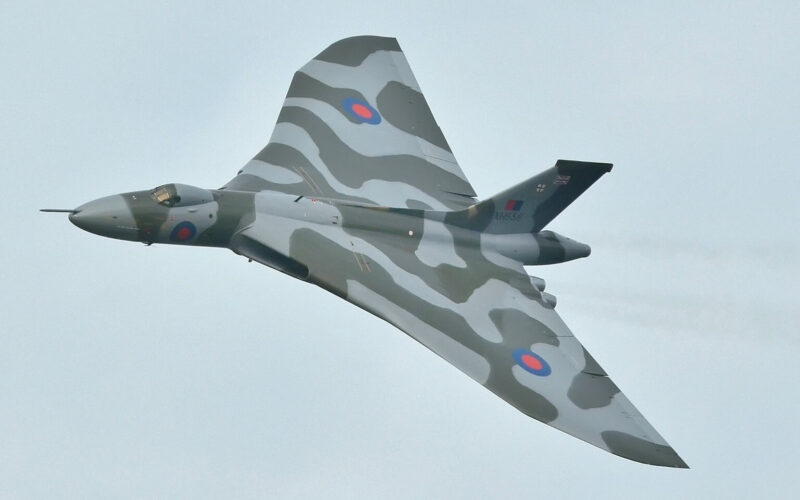Vulcan XH558, one of three remaining taxiable aircraft, will start its engines one last time on November 20, 2022, before its retirement in 2023.
Since its last flight on October 28, 2015, XH558, the last airworthy example of the Avro Vulcan, was kept in taxiable condition at Doncaster Sheffield Airport (DSA). However, with DSA to close permanently by the end of 2022, the “Spirit of Great Britain” will have to be relocated to another site.
An ultimate ferry flight was initially considered but was ruled too expensive by the Vulcan to the Sky Trust, the organization in charge of maintaining the bomber. Thus, the aircraft will have to be dismantled for relocation.
“Although she will no longer be running her engines, […] we will once again be able to offer the opportunity to be close to XH558 in an exciting, undercover facility that her thousands of supporters can enjoy,” the Vulcan to the Sky Trust explained in a statement.
Before the dismantlement and relocation, due to happen by June 2023, the public is invited to attend a final startup of the bomber’s four Olympus engines.
“With a heavy heart, on November 20, at 10am-2pm [GMT], you will be able to view the last engine testing ever of XH558 before she is put to sleep forever,” a fan page campaigning to save the bomber announced on Facebook. “Such a sad end to the very finest example of the Vulcan Bombers remaining.”
One of the last “V bombers”
The United Kingdom issued the development of three nuclear-capable V bombers, including the Avro Vulcan, in 1947 for the Royal Air Force Bomber Command. The Avro Vulcan entered service in 1956.
The Vulcan differed from its two counterparts, the Vickers Valiant, and the Handley Page Victor, in that it was designed as a large delta wing shape.
It was powered by four Bristol (later Rolls-Royce) Olympus engines, the same family of engines that would be later used on Concorde. In fact, a Vulcan was used as an engine testbed for the supersonic airliner.
The initial variant of the Vulcan (B.1) could carry a payload of over 9,500 kilograms, with an operating range of around 4,000 kilometers. It could reach a top speed of 1,039 kilometers per hour (Mach 0.96).
The Vulcan retired from its strategic bomber role in the early 1980s. However, six Vulcans continued their career with the No. 50 Squadron of the Royal Air Force as aerial refuelers until 1984, when the squadron was disbanded.
The Avro Vulcan XH558 “Spirit of Great Britain” was the last Vulcan in military service. After having spent most of its bomber career under repairs after a bird strike in 1975, the aircraft had very little flight time when the need for aerial refuelers emerged. Thus, it was one of the six airframes to be converted to the K2 tanker variant.
After leaving active duty, XH558 was selected as the aircraft of the RAF’s Vulcan Display Flight and continued to fly in various air shows up until 1992.
Upon becoming a civilian aircraft, the Vulcan was grounded for 14 years. It only took to the skies in 2007 under the initiative of the Vulcan to the Sky Trust. Avro Vulcan XH558 participated in several air shows over the following years, with its ultimate appearance taking place at the RIAT air show in 2015. It was then ferried to DSA and has been there ever since.

